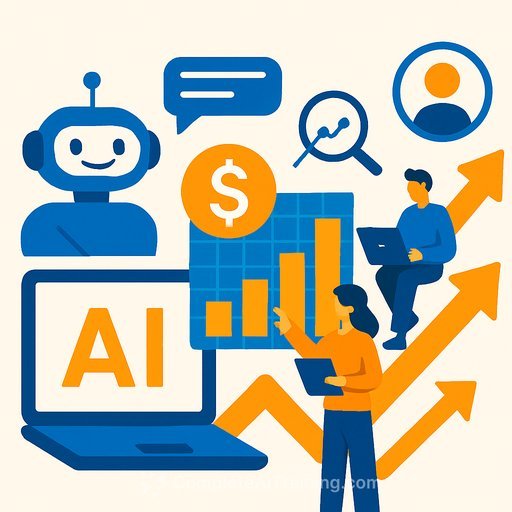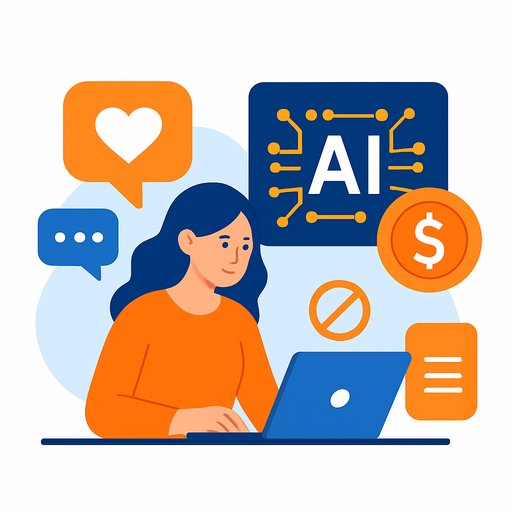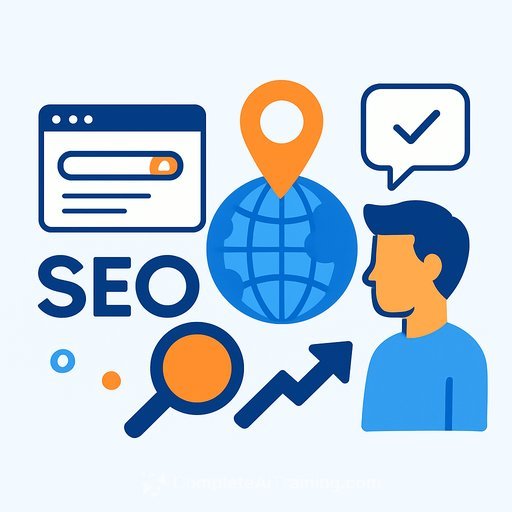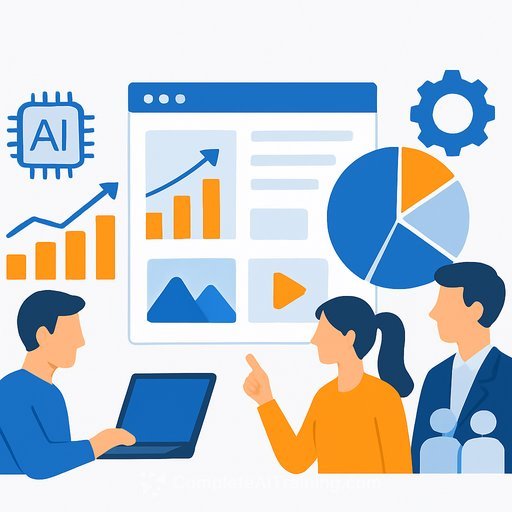AI for Sales & Marketing: 2025-2030 Outlook and What Marketers Should Do Now
The AI for Sales & Marketing market is set to grow from USD 25.63 billion in 2025 to USD 52.68 billion by 2030, at a 15.3% CAGR. That jump reflects a clear signal: AI is moving from experiments to essential infrastructure for pipeline growth, content operations, and customer engagement.
The shift is simple. Teams that used to rely on intuition are now using predictive scoring, personalized content at scale, and real-time recommendations to win higher-quality revenue with fewer manual steps.
What's Driving the Shift
- Machine learning and deep learning: better intent signals, forecasting, and churn prediction.
- Natural language processing: smarter chat, lead qualification, and content generation.
- Computer vision: creative production and product discovery in visual channels.
- Connected stacks: CRM, marketing automation, chatbots, and voice assistants working as one system.
- Real-time decisioning: dynamic pricing, next-best action, and channel optimization measured against granular KPIs.
Numbers That Matter
- Market size: USD 25.63B (2025) to USD 52.68B (2030)
- CAGR: 15.3%
- Scope: Global
- Forecast period: 2025-2030
- Report length: 193 pages
Market Segmentation & Coverage
Component
- Services
- Consulting Services
- Integration Services
- Support & Maintenance Services
- Software
Technology Type
- Computer Vision
- Data Mining & Predictive Analytics
- Machine Learning & Deep Learning Solutions
- Natural Language Processing (NLP)
Organization Size
- Large Enterprises
- Small & Medium Enterprises
Deployment Mode
- Cloud-Based
- On-Premise
Applications
- Advertising Optimization
- Content Generation & Personalization
- Customer Relationship Management (CRM) Enhancement
- Marketing Automation
- Sales Analytics & Forecasting
End User
- Banking, Financial Services, Insurance
- Healthcare
- IT & Telecommunications
- Retail & eCommerce
- Travel & Hospitality
Competitive Dynamics: What to Expect
Large cloud and enterprise vendors are packaging full-stack AI that slots into CRM and MAP. Specialist firms are winning targeted use cases such as sentiment, conversation intelligence, and creative automation.
Expect steady M&A and ecosystem partnerships with system integrators to speed rollouts. The edge goes to vendors that show measurable outcomes, modular architectures, strong developer support, and flexible licensing.
Shortlist Criteria for Marketing Leaders
- Business outcomes: lead-to-opportunity conversion, CAC payback, ROAS uplift, sales cycle time.
- Fit: prebuilt connectors for your CRM/MAP/CDP, data residency, and permissioning.
- Modularity: start small (one use case), expand without replatforming.
- Governance: content controls, audit logs, bias testing, and policy enforcement.
- Enablement: training, in-product guidance, and admin simplicity.
Practical Playbook (Quarter-by-Quarter)
- Q1: Fix data basics. Define ICP, map funnel stages, clean CRM/MAP fields, and centralize consent. Stand up an experimentation cadence.
- Q2: Run 2-3 high-impact pilots. Examples: AI lead scoring, email/ads creative generation, meeting intelligence for discovery calls.
- Q3: Scale winners. Automate routing, launch next-best-action in lifecycle campaigns, and connect sales and marketing alerts.
- Q4: Standardize. Document prompts and playbooks, set model monitoring, and renegotiate licenses to consolidate tools.
KPIs to Track
- Pipeline: qualified pipeline per rep and per campaign, win rate by segment.
- Efficiency: cost per SQL, content production time, SLA adherence for lead follow-up.
- Engagement: reply rate, aided recall from creative tests, on-site personalization lift.
- Forecasting: MAPE for revenue forecasts, slip rate, churn risk accuracy.
- Governance: model drift incidents, compliance exceptions, red-team findings resolved.
Cloud vs. On-Prem: Quick Guidance
- Cloud: faster setup, frequent model updates, easier integrations. Validate data residency and vendor security posture.
- On-Prem: stronger control and isolation. Expect higher upfront effort and longer lead times for integrations.
Policy, Risk, and 2025 Tariffs
Tariff shifts in 2025 can affect import costs for AI hardware and certain software services, which may flow into vendor pricing. Build a 5-10% buffer in budgets for infrastructure or consumption-based tools tied to affected inputs.
Tighten governance with a clear risk framework and consent strategy. For reference, review the NIST AI Risk Management Framework and GDPR guidance on lawful basis for data use.
Companies to Watch
- 6Sense Insights, Inc.
- Adobe Inc.
- Amazon Web Services, Inc.
- Clari, Inc.
- COGNISM LIMITED
- Conversica, Inc.
- CopyAI, Inc
- Creatio
- Gong.io Inc.
- Google LLC by Alphabet Inc.
- H2O.ai, Inc.
- HeyGen
- Hootsuite Inc.
- HubSpot, Inc.
- International Business Machines Corporation
- Microsoft Corporation
- Oracle Corporation
- Outreach Corporation
- Pegasystems Inc.
- Salesforce, Inc.
- Salesloft, Inc.
- SAP SE
- SAS Institute Inc.
- Zapier Inc.
- Zoho Corporation Pvt. Ltd.
Budgeting Tips
- Allocate 60-70% to platform and core integrations, 20-30% to services and enablement, and 10% to experimentation.
- Use shared savings: tie part of vendor fees to conversion, content throughput, or forecast accuracy where possible.
- Consolidate overlapping vendors each Q4 once results are clear.
Next Steps for Marketing Teams
- Pick one pipeline-centric use case and one content-centric use case. Stand up pilots with clear exit criteria.
- Document prompts, guardrails, and QA standards for content and data use.
- Build a simple scorecard for monthly reviews across sales, marketing, and RevOps.
If you want structured training and templates to speed this work, explore AI programs for marketers:
Bottom line: the market is growing, the toolset is ready, and the playbook is clear. Choose focused use cases, measure aggressively, and scale what proves its worth.
Your membership also unlocks:






